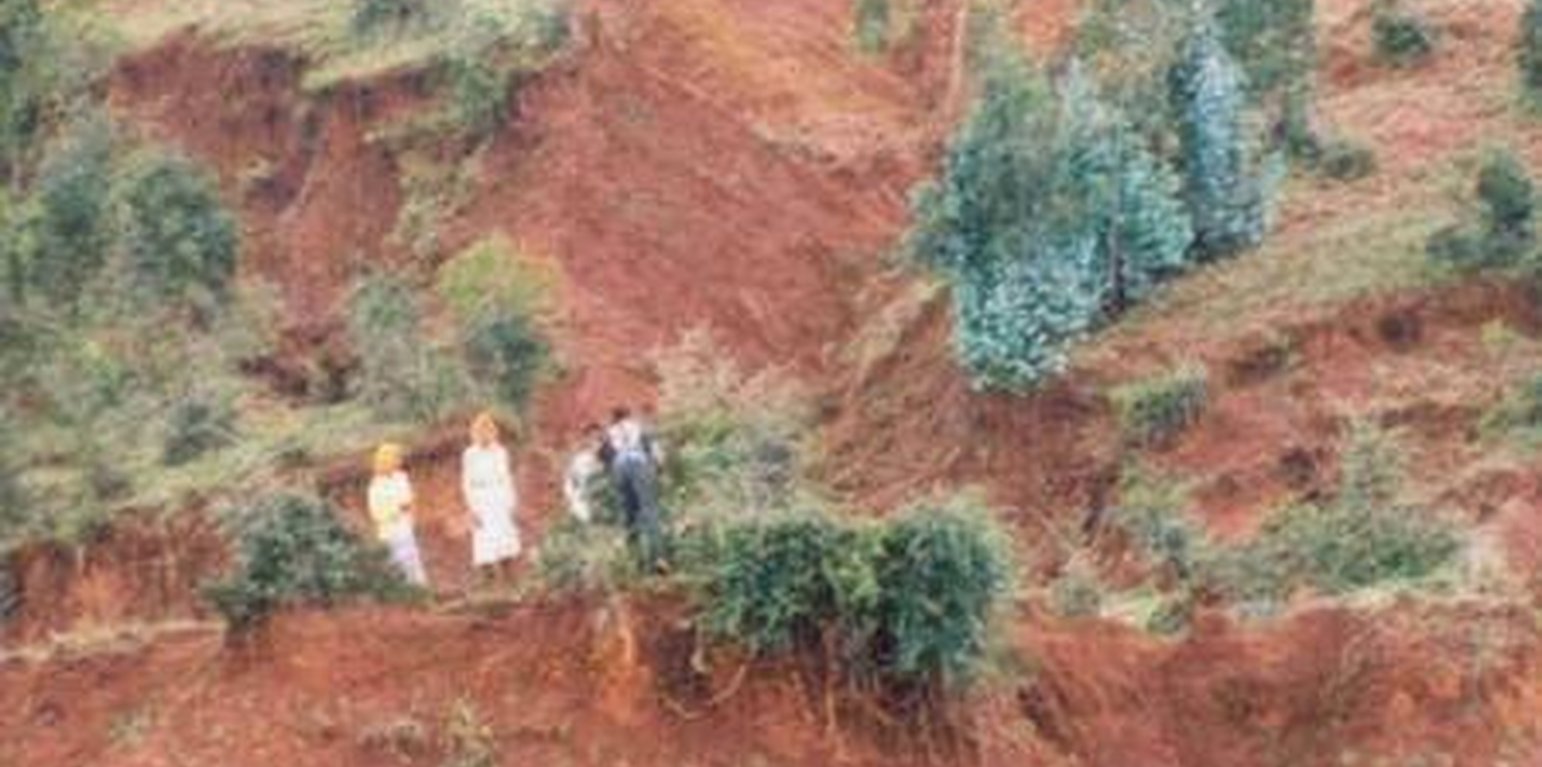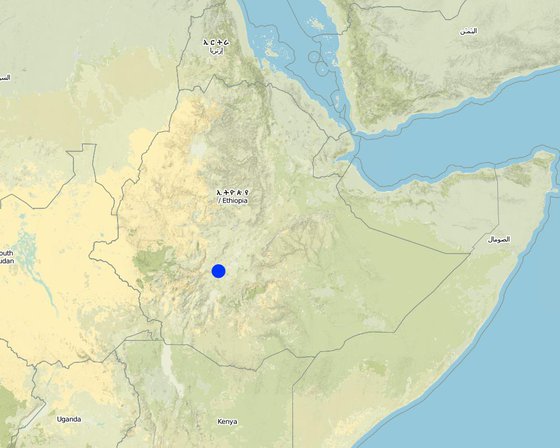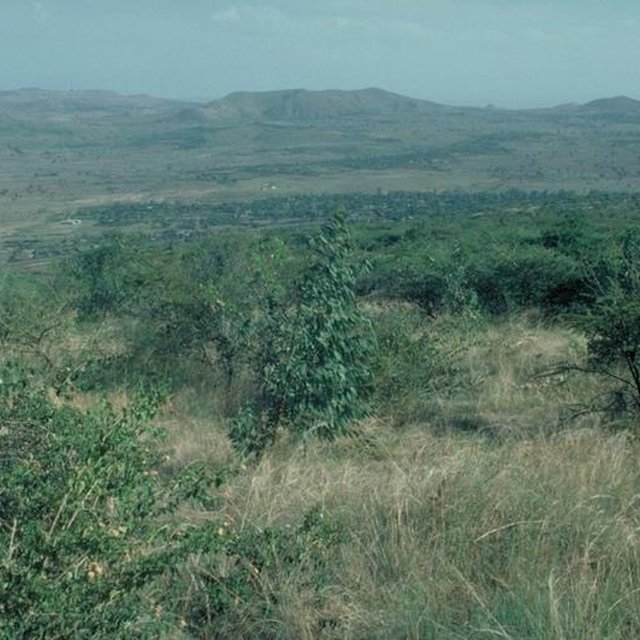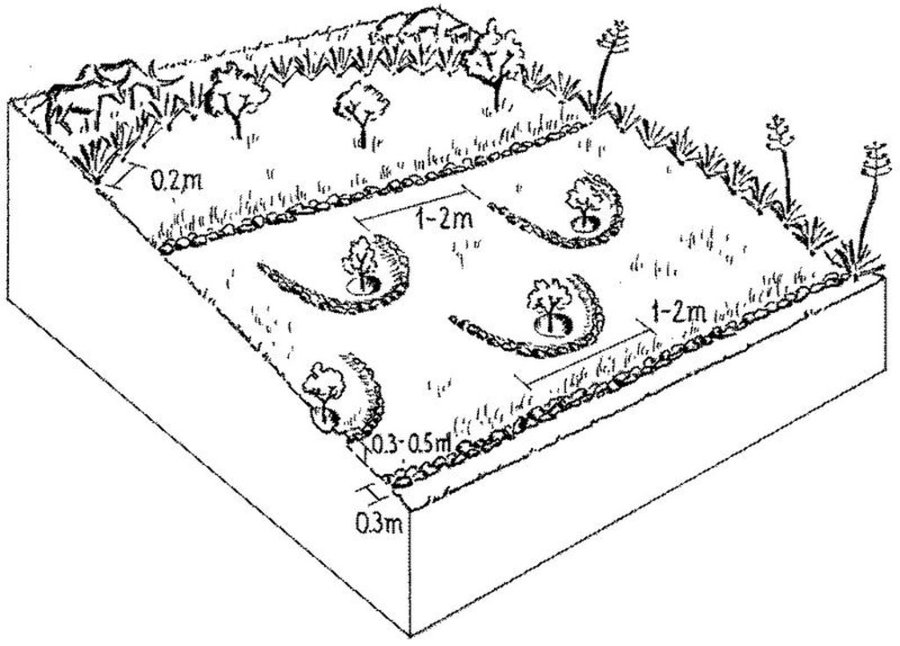



Area closure involves the protection and resting of severely degraded land to restore its productive capacity. There are two major types of area enclosures practised in Ethiopia: (1) the most common type involves closing of an area from livestock and people so that natural regeneration of the vegetation can take place; (2) the second option comprises closing off degraded land while simultaneously implementing additional measures such as planting of seedlings, mulching and establishing water harvesting structures to enhance and speed up the regeneration process. The focus of this case study is on this second type.
The selection of measures chosen for rehabilitation depends mainly on the land use type, and to a lesser extent on climate, topography and soil type. Degraded croplands with individual land use rights are normally treated with additional structural measures to retain soil moisture and trap sediment, and with agronomic measures to restore soil fertility. Open access grazing lands are closed for natural regeneration while partly treated with additional measures, and open access woodlands are simply closed. In the case study area 60% of the enclosed area is under treatment with additional conservation measures and 40% is under natural regeneration. First, the area to be closed is demarcated and protected with fencing, usually live fences, and a site guard may be assigned to further ensure protection. Structural measures such as micro-basins, trenches, and bunds that enhance water infiltration and soil moisture may be constructed to increase survival rate of vegetative material planted. Hillside terraces, spaced at a 1 m vertical interval with a width of 1 m are constructed on steep slopes (exceeding 20%). Nitrogen-fixing and multipurpose shrubs/trees (for fodder, fuel) such as Acacia saligna, Sesbania sesban, Leucaena leucocephala as well as local grass species such as napier (Pennisetum purpureum) and rhodes (Chloris gayana) are planted as additional measures for conservation.
The maintenance of area enclosures involves activities such as replanting, maintaining of fences, pruning of trees and weeding. After one year, cut-and-carry of grass for stall-feeding can be partly practiced - which is of economic benefit to the farmers. Rehabilitation normally takes about 7-10 years depending on the level of degradation and intensity of management. Land use is limited to selective cutting of trees, collection of dead wood and cut-and-carry of grass for livestock fodder. On individually owned enclosures land users start cutting trees after three years (for eucalyptus) and after 7–8 years (for other trees), while on communal land farmers are allowed to collect dead wood after 3-–4 years, and the community decides about the use of trees.

Lugar: Bilate River Catchment (Rift Valley), Alaba, South Ethiopia, Etiopía
No. de sitios de Tecnología analizados:
Difusión de la Tecnología:
¿En un área de protección permanente?:
Fecha de la implementación:
Tipo de introducción







| Especifique insumo | Unidad | Cantidad | Costos por unidad (n.d.) | Costos totales por insumo (n.d.) | % de los costos cubiertos por los usuarios de las tierras |
| Mano de obra | |||||
| Labour | ha | 1,0 | 175,0 | 175,0 | 50,0 |
| Equipo | |||||
| Tools | ha | 1,0 | 25,0 | 25,0 | 100,0 |
| Material para plantas | |||||
| Seeds | ha | 1,0 | 40,0 | 40,0 | |
| Seedlings | ha | 1,0 | 150,0 | 150,0 | |
| Material de construcción | |||||
| Stone | ha | 1,0 | |||
| Wood | ha | 1,0 | |||
| Otros | |||||
| site guard (kg grain/ha/year) | ha | 1,0 | 1,0 | 1,0 | 100,0 |
| Costos totales para establecer la Tecnología | 391.0 | ||||
| Costos totales para establecer la Tecnología en USD | 391.0 | ||||
| Especifique insumo | Unidad | Cantidad | Costos por unidad (n.d.) | Costos totales por insumo (n.d.) | % de los costos cubiertos por los usuarios de las tierras |
| Mano de obra | |||||
| Labour | ha | 1,0 | 35,0 | 35,0 | 100,0 |
| Equipo | |||||
| Tools | ha | 1,0 | 5,0 | 5,0 | 100,0 |
| Material para plantas | |||||
| Seeds | ha | 1,0 | 10,0 | 10,0 | |
| Seedlings | ha | 1,0 | 40,0 | 40,0 | |
| Otros | |||||
| site guard (kg grain/ha/year) | ha | 1,0 | 1,0 | 1,0 | 100,0 |
| Indique los costos totales para mantenecer la Tecnología | 91.0 | ||||
| Costos totales para mantener la Tecnología en USD | 91.0 | ||||
(cut-and-carry of grass)
(cut-and-carry of grass)
Reduction of grazing area leads to high pressure on remaining grazing areas
(selling grass/wood)
Unequal share of benefits, some illegal cutting of vegetation is involved
>50%
>80%
initially 50% reduction, after 2–3 years
increased organic matter, nitrogen fixing shrubs
recovering disappearing local species
competition between naturally regenerating and oversown (grass)species
Also groundwater recharge
Less sediment transported